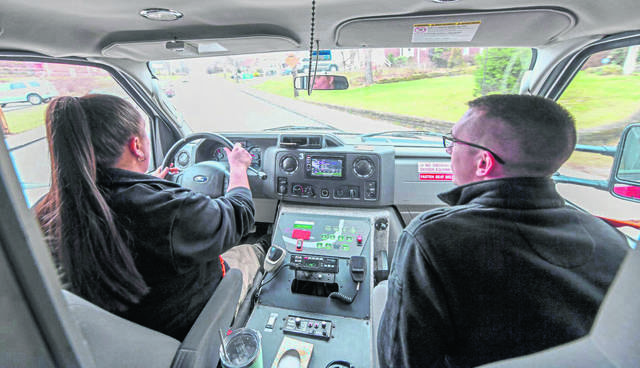https://mirror.triblive.com/opinion/editorial-answer-distress-call-for-emts/
Editorial: Answer distress call for EMTs

If you need help, you call 911.
They send a firetruck if something is on fire, or a police car if a crime is occurring. If someone is sick or hurt, they send an ambulance.
The emergency medical technicians that staff an ambulance are critical links in the health care and first response chain. They show up at crash scenes. They are present at fires — both to treat victims and to support the firefighters. They are on call at high school sporting events. They respond to nursing homes and assisted-living apartments. They come when they are called for chest pains and broken legs and when people stop breathing.
So what do you do if there aren’t enough people to staff those ambulances? What if there aren’t enough ambulances at all?
It’s a scary thought — especially in the midst of a severe flu season and a global panic over COVID-19.
Unfortunately, it’s not just a what-if. It seems to be where we are headed.
In the past 10 years, 220 emergency medical service providers have shut down in Pennsylvania. A number have been in the Greater Pittsburgh area, like Springdale, Avonmore, Arnold and East Deer.
And maybe that seems like it doesn’t affect you if you don’t live there. You would be wrong.
Every time an ambulance service closes, it doesn’t mean fewer people are having heart attacks and developing pneumonia. It means those people are picked up by the next closest ambulance, which is then unavailable to pick up someone else.
It can make response times longer and longer. With a broken bone, that means more time in pain. With a stroke, it means more seconds ticking by without critically needed medical care.
But why are they closing?
Many EMTs and paramedics are leaving ambulance companies to become nurses. EMTs make $13 to $15 an hour, about the same as a shift supervisor at Sheetz. But training to become an EMT can cost $1,000, and doing the work can mean wearing a bulletproof vest.
Job website Glassdoor puts the average annual salary for a Pittsburgh-area registered nurse at $53,355.
The agencies are hemorrhaging from dual wounds — both the personnel to provide service and the money to pay them. Small companies rely on memberships and donations in addition to insurance fees and patient billing, which is often unpaid.
Sometimes it’s hard to find a call to action in a situation like this other than pointing to an unobtainable utopian end result. But this time, there is help in everyone’s hands. Become a member of an ambulance company, which helps you if you need it and everyone if you don’t. Make a donation if you can. And when you get a bill, pay it.
The ambulances come when we call. We should show up for them, too.
Copyright ©2025— Trib Total Media, LLC (TribLIVE.com)
